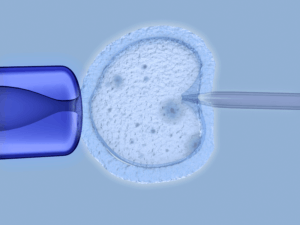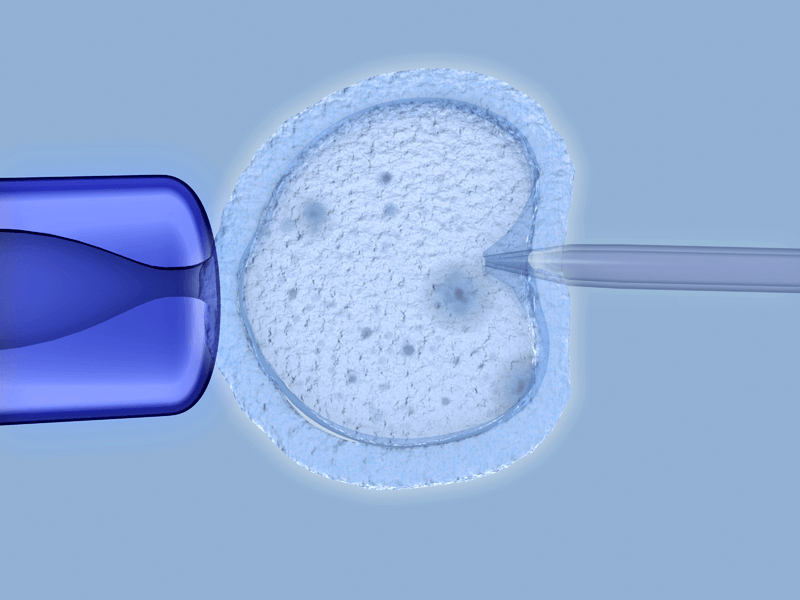Your Fertility Center Has the Technique for Getting Around the Sperm Blockage

This can be due to prior surgery on the male genitalia, prior bladder neck surgery, certain infections that can cause scarring, congenital absence of the vas deferens, failed reversals of vasectomy, diabetes, quadriplegia, and retrograde ejaculation (where on orgasm the sperm are ejaculated back into the bladder rather than out through the penis).
When a man has a blockage, all of a sudden that one sperm can be as elusive as the winning lottery ticket and just as desirable. At this point it’s time to discuss MESA (microepididymal sperm aspiration) with the medical professionals at your fertility center.
What is MESA?
MESA (microepididymal sperm aspiration), is a procedure for removing sperm from the body using a needle. The procedure has to be executed in a medical setting, most fertility clinics are set up to perform the procedure on an outpatient basis. The procedure itself is fairly simple, after numbing the area, a very tiny needle is passed through the scrotum and into the epididymis, and epididymal fluid, along with sperm, is aspirated out.
This sperm is preferred by fertility centers, as opposed to sperm collected farther up in the system, because epididymal sperm tends to be a bit older sperm and generally has motility which means it can move on its’ own. When sperm are moving, it’s easier to determine if they’re alive and sort out the healthiest, strongest ones.
This sorting is done in the lab at your fertility center by a trained technician using a high-power optical magnification provided by an operating microscope. Any sperm determined to be good quality that aren’t used during the first IVF procedure are generally stored by the fertility clinic for future IVF procedures, this way the MESA procedure doesn’t have to be repeated.
Now that we gotten around the blockage and have sperm, what’s the next step?
The sperm retrieved using MESA can’t be used for traditional IUI or IVF because there isn’t enough of it and it isn’t moving enough to fertilize an egg in the traditional way. IVF (In-Vitro Fertilization) with ICSI (Intracytoplasmic Sperm Injection) has to be used in order for this retrieved sperm to be used. This is why the sorting of the sperm by your fertility clinic is so important, the better the sperm quality the more likely the ICSI procedure is going to be successful.
So, what is ICSI? ICSI is a procedure requiring only one healthy sperm, that sperm is injected directly into the egg. After 3 to 5 days of incubation, the fertilized egg is then transferred to the uterus or may be frozen for future implantation. In traditional IVF, the eggs are put in a dish with millions of sperm so one of those sperm can fertilize the egg.
Sperm retrieved via MESA can’t be used for this traditional method because there are not enough of them available and they can’t swim or move enough to get to the egg and get through the shell. Theses sperm can, however, fertilize an egg if they are injected directly into the egg and don’t have to swim to the egg or push through the shell. Many fertility centers report that up to half of their IVF cycles involve ICSI.
Order Your At Home Semen Analysis Kit
Is ICSI only used for sperm retrieved using MESA?
No, ICSI is used in approximately half of IVF procedures and the procedure is done with sperm retrieved the “regular” way as well. There are many reasons to use ICSI besides a blockage of the sperm, some of these include:
- Patients with low or zero sperm count.
- Patients with a high percentage of abnormally shaped sperm. This can result in poor sperm motility.
- Sperm that can’t be ejaculated but can be collected from the testicles or from the epididymis where sperm is stored (MESA). This may be due to an irreversible vasectomy or injury.
- Sperm can’t get to the egg at all.
- Sperm can get to the egg, but for some reason can’t fertilize it.
- Inability to get an erection and ejaculation, due to spinal cord injuries, diabetes, or other health conditions.
The good news is, even if a man has no sperm in his ejaculate, because of a blockage of some kind, there is a way around the blockage so he can father a child. This is the MESA technique and it is used in up to half of IVF procedures. The technique involves extracting the sperm from the epididymis before the blockage. This gives the fertility center viable sperm to use during the IVF procedure.
Since MESA retrieved sperm isn’t active enough to swim to the egg and break through the shell, and there aren’t enough of them retrieved at any one time for traditional IVF, the ICSI procedure is used. During ICSI that one precious sperm is injected directly into an egg so fertilization is assured. Sperm blockage is a problem but one that can be overcome fairly easily. With the help of a fertility clinic most men with a blockage problem can become fathers.




















